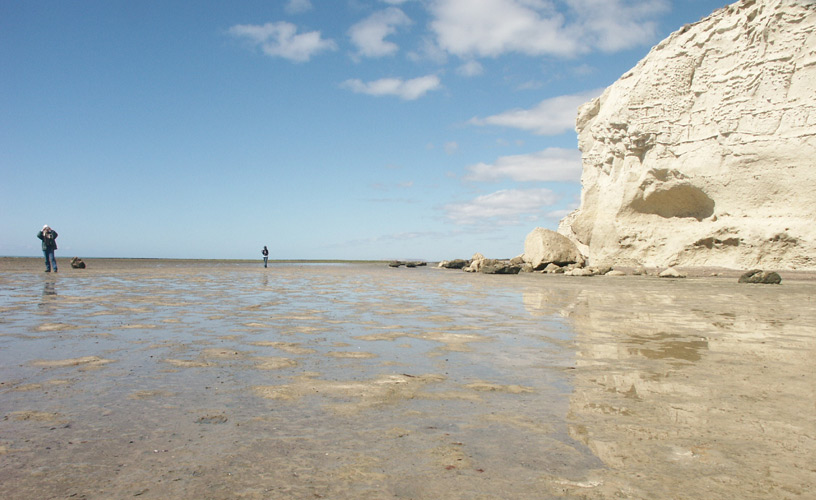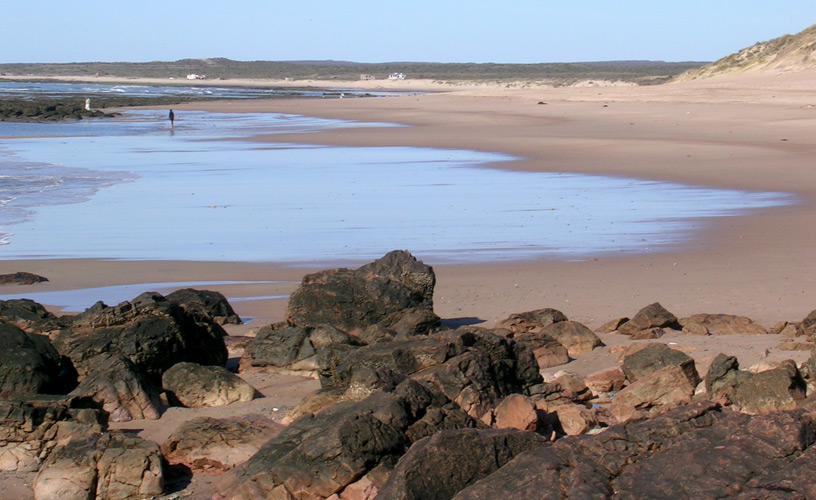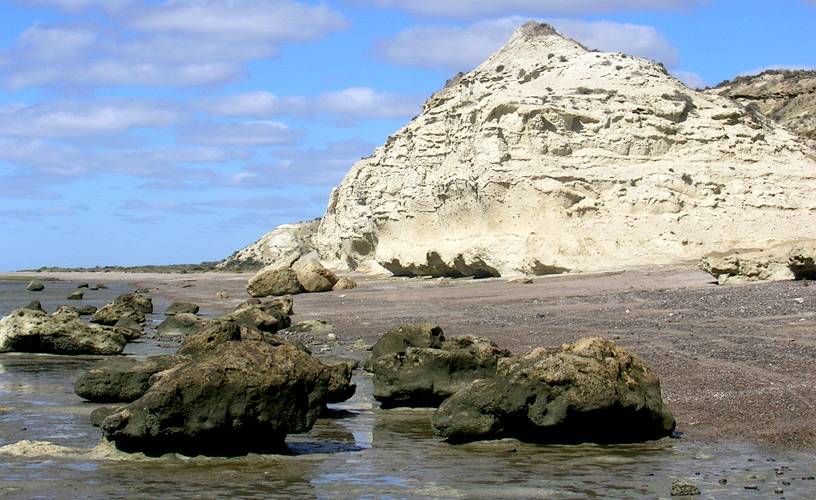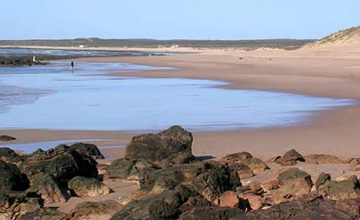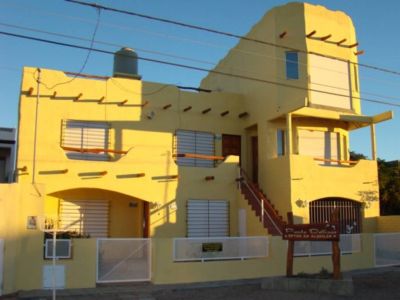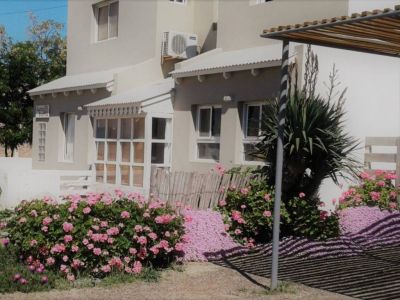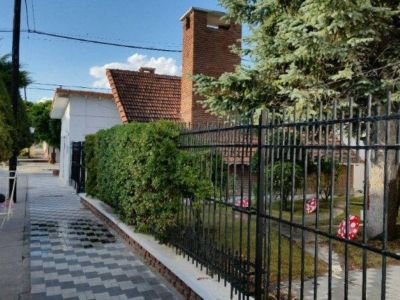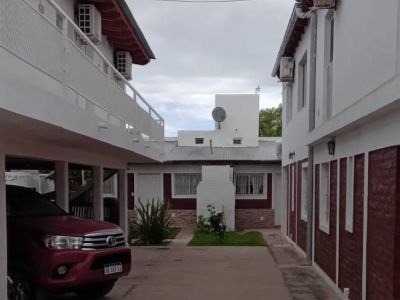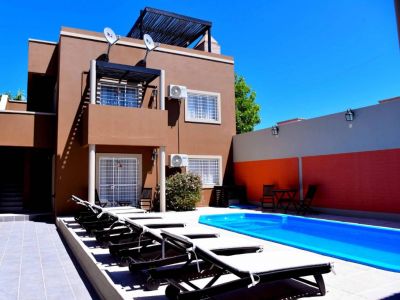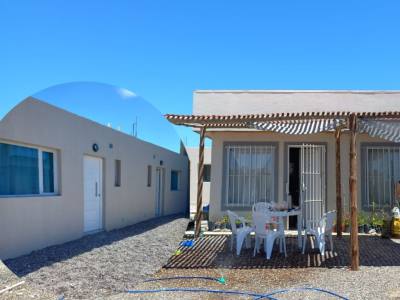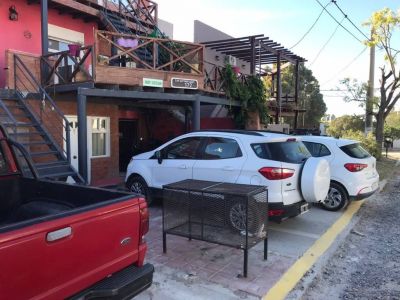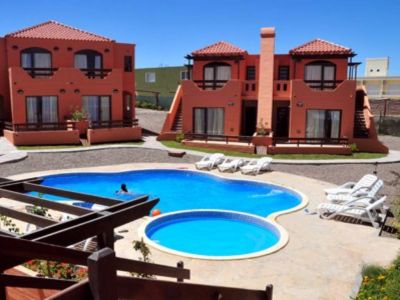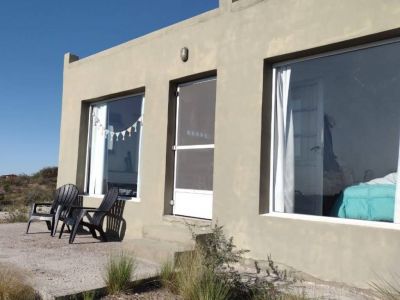Curious Formations on the Seashore
These are magical nooks with rocky elevations and desert beaches, ideal to spend one day in search of new sea horizons.
With a beach that spans for many kilometers both southwards and northwards, the District of Las Grutas amazes visitors with its very picturesque natural rocks. El Sótano -whose name stands for “the basement” in Spanish- and Las Ostras Ravine –which means “the oysters” in Spanish- are two seaside spots lying close to areas accessed by 4WD vehicles. In order to see these wonders, we drove southwards bordering the beach. After reaching Villa de los Pulperos, we followed a track towards Piedras Coloradas (Red Stones), very old formations dating from the Pre-Cambrian period. We left behind the sand hills where sandboarding is usually practiced and drove on for about 15 kilometers before we came to the place known as El Sótano. The tides show an ample difference throughout the day. The best time of the day is before and after the high tide. The cliffs are steep and they feature the greatest biological diversity in the area. This spot is known as an excellent fishery and a perfect location to find octopus.
We continued moving southwards for two kilometers more to reach Las Ostras Ravine. As we got there, we walked along and across the shore and picked up shells and clams. The most amazing fact was to find large fossilized and crystallized oysters along with other sea valves. When the tide is low, some small ponds are formed and small sea fauna specimens are observed in them. After 30 kilometers more, the gravel road leads to a 153-meter-high plateau known as Fuerte Argentino (Argentinian Fort). It resembles an ancient fortification and is a balcony over Gulf San Matías, featuring a unique panoramic view. This is an appropriate destination for adventure travel. Besides, a thousand stories involving natives, pirates and mythical hidden treasures are woven around it. Not only is Fuerte Argentino visited by photographic safaris but it also represents a perfect location to practice snorkeling, angling and sandboarding. During a short tour, we got a sample of the changing scenes that ornament the Atlantic coast in the proximity of Las Grutas. Thus, natural geographical features are combined with adventure sports and true as well as fantastic stories.
Mónica Pons
Jorge González
